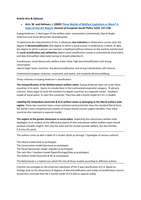Samenvatting
Summary Political Economy in International Perspective
This file contains well-written extensive summaries of all 27 academic articles on political economy that are part of the course Political Economy in International Perspective, Master level at Leiden University, Public Administration. Also for other students that have an interest in political econo...
[Meer zien]




